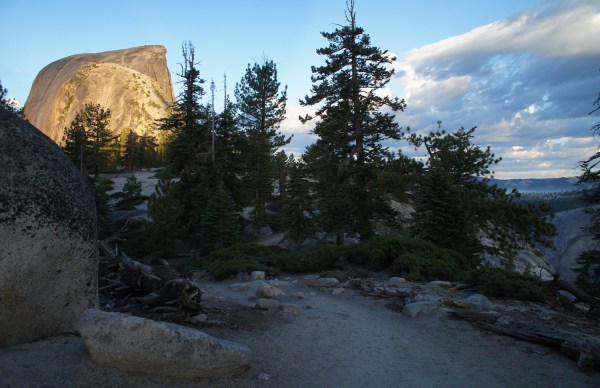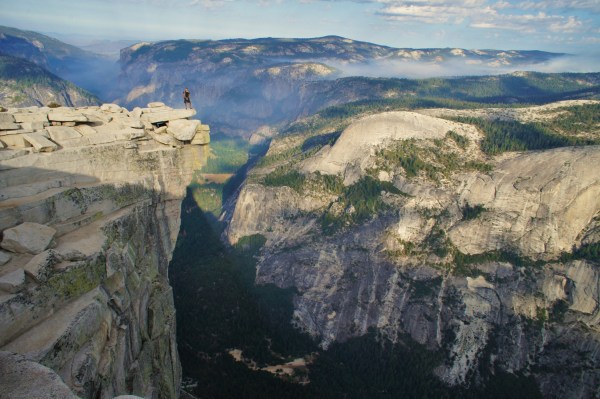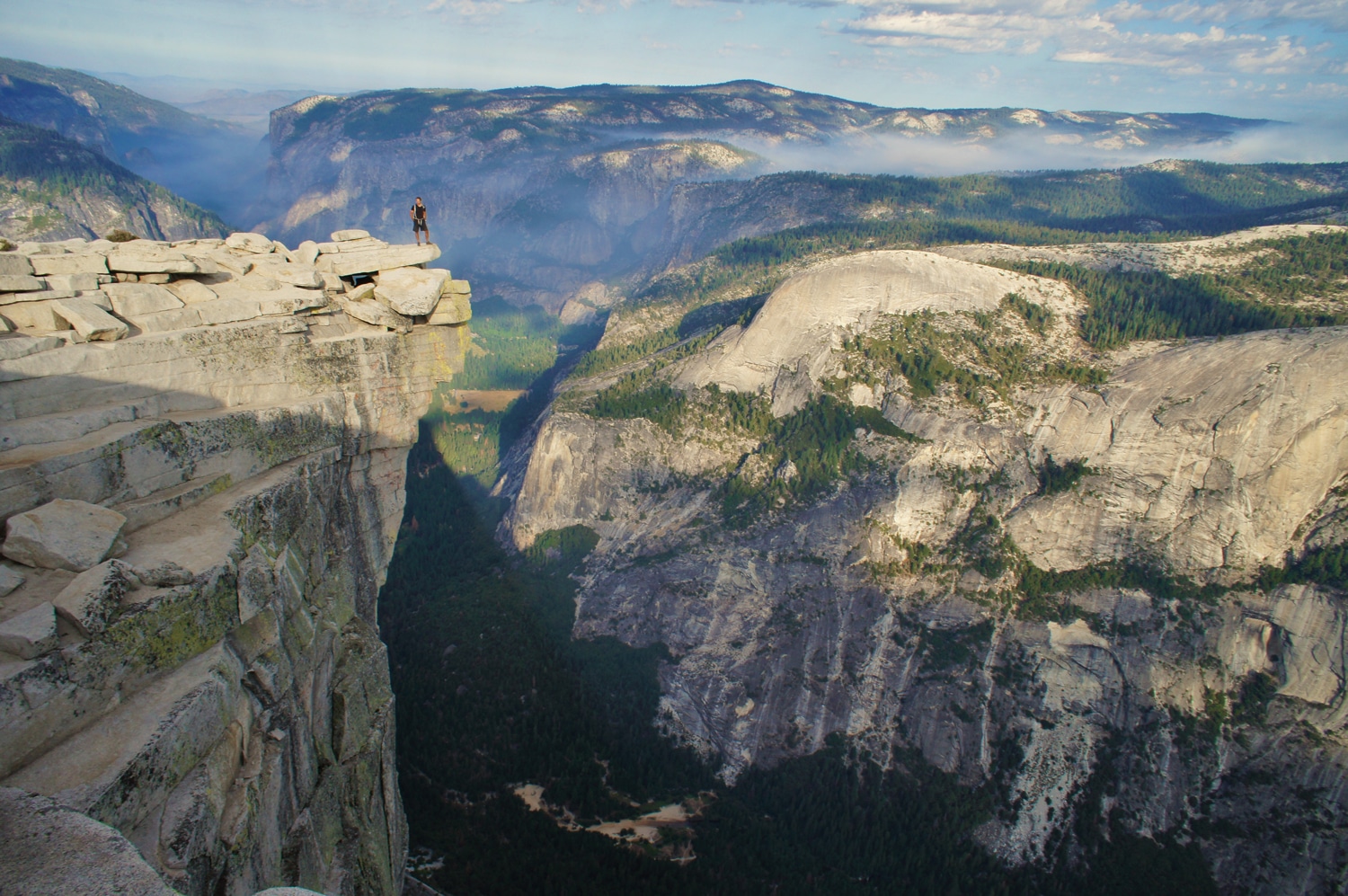Here’s some good news, busy reader: All epics do not require three-week treks to basecamps at high altitudes, numerous vaccinations or bushwhacking through Amazonian jungles.
Rather, epics can happen over a weekend. And in the United States.
Half Dome Backpacking
If you’re looking to step up your backpacking game or just need a quick jolt of adventure, look no further a backpacking trip to Yosemite’s Half Dome.

Rolling out of a warm sleeping bag before sunrise is not fun, but witnessing Half Dome at first light makes waking up before the birds totally worth it.
Challenges include waking up before the birds, potential bear encounters and natural disasters, incendiary trail conditions, and maintaining reverence for the weather gods with a sober balance of hope and anxiety over imminent clouds billowing on the horizon. Rain jackets are not optional.

A backpacker navigates one of many steep trail options leading to Half Dome. Nearly 5,000 feet below yawns the mouth of Yosemite Valley, while El Capitan’s brow is barely visible in the distance.
But the daily physical effort is totally worth it as you’re guaranteed to find inspiration in the Sierra high country, which flexes glacier-tipped peaks, acres of evergreen forests, endless folds of mountains, flowered meadows and icy alpine waters.
Each day is end-capped with meals that are super tasty, thanks in part to your arduous efforts hiking 6 to 12 miles every day and in part to your gourmet backcountry chefs (the same guides that will regale you with an enthusiastic monologue about John Muir and Teddy Roosevelt’s camping trip in Yosemite over a hundred years ago).
Your body appreciates the calories as your soul finds the heart and chutzpah to ascend the highlight of the weekend, Half Dome’s Cable Route.
Fixed with bolts in the rock and raised onto a series of metal poles, a pair of braided steel cables turns a class 5 scramble into an accessible class 3 trek on slick granite with a thousand feet of exposure gaping under you.

After snagging a pair of used gardening gloves left at the base of the climb, hikers take their first steps up the slick granite to Half Dome’s summit via the Cable Route. Some find gloves help protect hands during the ascent and descent, which is garnished with 400 feet of steel-braided cables.
The Cable Route, which covers the last 400 feet of the climb, was originally set in 1875 by George Anderson. He drilled iron eyebolts into the granite of Half Dome’s shoulder and, using a rope, defied Josiah Whitney’s presumption that the top of Half Dome was “perfectly inaccessible” and would “never be trodden by human foot.”
Today, the Cable Route is climbed every year by thousands of visitors. Protected by the National Historic Registry, it’s regarded as one of the National Park Service’s most unique experiences.

A lone hiker takes in the humbling splendor of Yosemite Valley and the surrounding Sierra high country from Half Dome’s unbeatable viewpoint aptly known as The Visor.
Though the cables are impressive, the true reward lies on Half Dome’s summit: commanding views of Yosemite Valley spreading below, ravens soaring on early breezes, and the morning sun warming your back.
In this moment, everything is perfect.
Except one thing: Standing on top of Half Dome means you can no longer see Half Dome. As the Brad Pitt of recognizable rocks around the world, Half Dome’s smooth face is unforgettably good-looking and invokes the same desire to do something cool like ride a horse really fast, shadow cast or wrestle a grizzly.
So after taking a few photos, you begin the intimidating journey down the Cable Route and the knee-pounding descent on the John Muir Trail back to the valley. When you finally drop your pack one last time, take a swig of a cool beverage and look up: Half Dome’s gorgeous prominence looms 5,000 feet above you, sparking wonder as to what epic adventure you’ll stumble upon next weekend.
